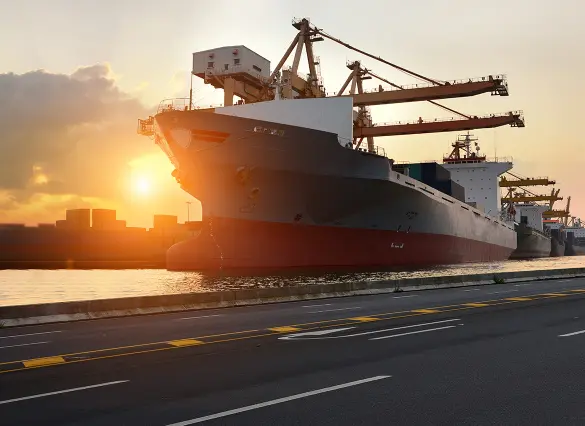In modern logistics, surface-to-air freight handling refers to the seamless transfer of cargo from ground transport (road or rail) to air transport. This multimodal coordination is critical for industries requiring fast, reliable, and secure movement of goods across regional and international borders.
Efficient handling techniques ensure that cargo is transferred with minimal delays, reduced handling risk, and optimized cost. Logistics companies employ a combination of technology, infrastructure, and skilled workforce to make this possible.
1. Integrated Hub Facilities
Logistics companies use strategically located air cargo hubs or freight terminals near major airports, designed for high-speed surface-to-air transitions.
-
On-site truck docks for rapid loading/unloading
-
Direct airside access to reduce cargo movement time
-
Bonded warehouse areas for customs-controlled goods
-
Cool chain zones for temperature-sensitive cargo
These integrated hubs support round-the-clock operations to align with flight schedules.
2. Cross-Docking Operations
Cross-docking is a key technique where inbound cargo from trucks is directly transferred to outgoing air cargo containers (ULDs) without long-term storage. Benefits include:
-
Reduced handling time
-
Minimized storage costs
-
Faster delivery cycles
-
Ideal for e-commerce, perishables, and express shipments
3. Unit Load Devices (ULD) Preparation
For air shipments, cargo is consolidated into ULDs (pallets and containers). Logistics teams prepare ULDs at ground facilities to ensure quick airside handoff.
-
Goods are weighed, measured, and secured according to IATA standards
-
Fragile or hazardous items are packed with protective materials and clear labeling
-
Load distribution is calculated for aircraft balance and safety
Proper ULD preparation helps avoid rework at the airport, saving time and reducing errors.
4. Surface Freight Pre-Screening and Documentation
To avoid delays at the airport, logistics providers pre-screen cargo for security and regulatory compliance:
-
X-ray scanning and manual inspections at logistics hubs
-
Export and customs documentation prepared before arrival at airport
-
Electronic Air Waybill (e-AWB) generation for faster acceptance by airlines
This proactive approach ensures cargo is “ready-to-fly” upon reaching the terminal.
5. Real-Time Tracking and Visibility
Modern logistics systems rely on IoT-enabled sensors, barcode/RFID tagging, and transport management software (TMS) to maintain visibility across all stages:
-
From pickup by truck to delivery at airport
-
Real-time updates on location, temperature, and handling status
-
Exception alerts for delays or damage
This level of transparency improves reliability and customer satisfaction.
6. Skilled Handling and Compliance
Surface-to-air freight involves a wide range of cargo types—from general goods to dangerous goods (DG), pharmaceuticals, or high-value electronics. Trained logistics personnel follow:
-
IATA and ICAO handling protocols
-
Safety regulations for DG and lithium batteries
-
SOPs for time-sensitive cargo (e.g., “Next Flight Out” services)
This ensures that shipments are handled correctly and compliantly at every step.
Conclusion
Efficient surface-to-air freight handling is essential in today’s fast-paced global trade environment. Logistics providers use a combination of infrastructure, technology, and expertise to ensure smooth multimodal transfers. Whether it’s express parcels, pharmaceuticals, or just-in-time manufacturing components, these techniques keep cargo moving safely, quickly, and efficiently across the globe.



By SiteAdmin@CRP